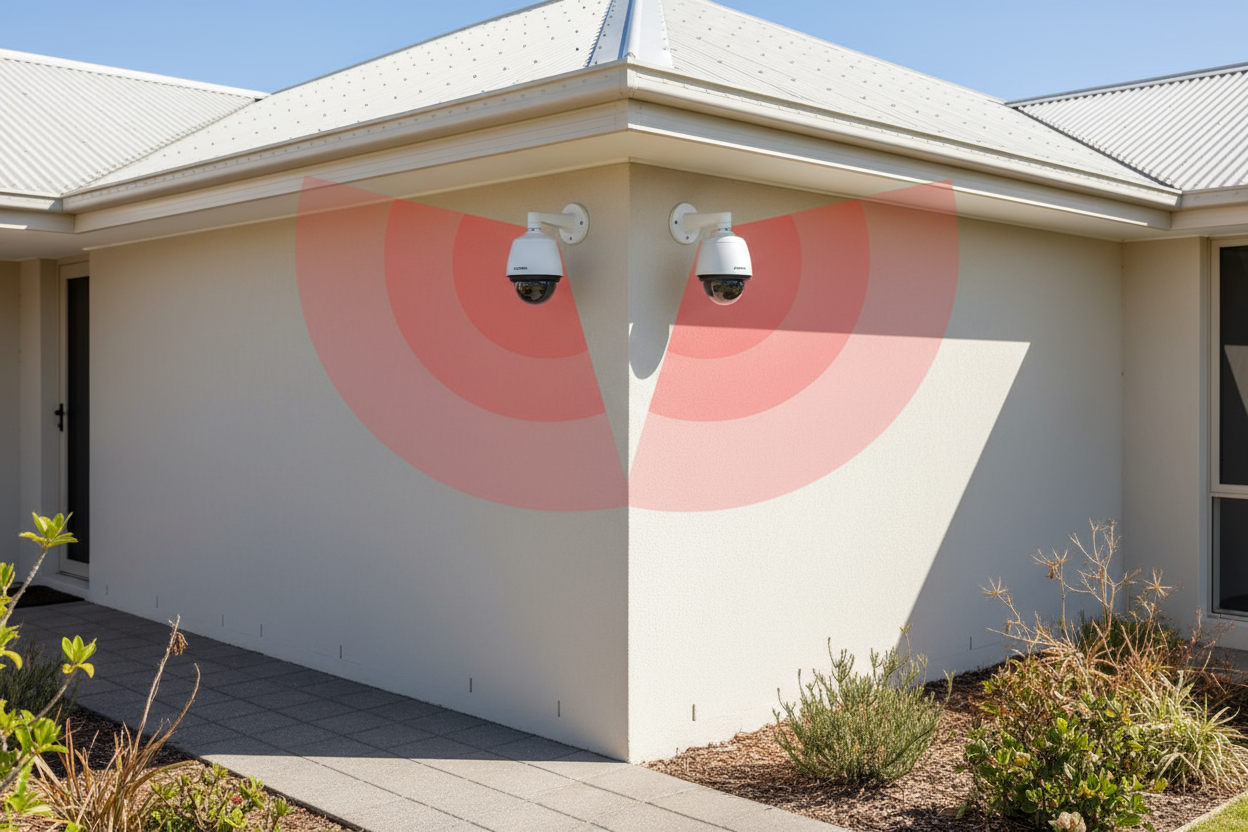Installing outdoor security cameras yourself saves money, but common mistakes can leave your property vulnerable. Here are the top 10 errors DIYers make—and how to fix them.
1. Wrong Camera Placement

The Problem: Installing cameras randomly instead of covering critical entry points.
The Fix:
- Mount cameras 2.5-3m (8-10 feet) high
- Cover all ground-floor doors and windows FIRST
- Angle down 15-30° for best motion detection
- Avoid pointing at the sky or walls—wastes resolution
Pro Tip: Most break-ins happen through front/back doors, not side windows.
2. Poor WiFi Signal Planning

The Problem: Mounting cameras where WiFi can't reach, causing constant disconnections.
The Fix:
- Test WiFi strength BEFORE drilling (use a phone app)
- Most cameras need 2.4GHz (not 5GHz)
- Use WiFi extenders or mesh systems for large properties
- Consider PoE (Power over Ethernet) for reliability
Reddit User Experience: "Camera looked perfect. Disconnects every 2 hours. Test your WiFi first!"
3. Ignoring Weather Protection

The Problem: Leaving connections exposed to rain and humidity.
The Fix:
- Use IP65+ rated cameras (IP66+ for coastal Australia)
- Seal all cable entry points with silicone
- Install weatherproof junction boxes
- Create cable "drip loops" to channel water away
4. Bad Camera Height

The Problem: Too high = only see heads. Too low = easy to tamper.
The Fix:
- Optimal height: 2.5-3 meters
- Tilt downward 15-30 degrees
- Test the view angle before permanently mounting
5. Wrong Lens Selection

The Problem: Ultra-wide lenses can't identify faces; narrow lenses miss activity.
The Fix:
- 2.8mm lens: Wide coverage (124°) for driveways/yards
- 4mm lens: Better for facial recognition at entry points
- Varifocal cameras: Adjust zoom after installation
6. Weak Network Security

The Problem: Default passwords and no updates = hacker vulnerability.
The Fix:
- Change default passwords immediately
- Update firmware every 3 months
- Use WPA2/WPA3 encryption
- Create separate WiFi network for cameras
- Enable 2FA if available
7. Lighting Issues

The Problem: Cameras facing sun = useless glare. Poor night vision = can't see intruders.
The Fix:
- Never point cameras at direct sunlight
- Test night vision before final installation
- Keep IR cameras away from reflective walls
- Add motion-sensor lights if needed
Australia-Specific: Intense afternoon sun (2-5pm) causes major glare—test during peak hours.
8. Power Supply Problems

The Problem: Batteries die fast, no backup power during outages.
The Fix:
- Battery cameras: Add solar panels (Australian heat drains batteries faster)
- Wired cameras: Use outdoor-rated cables
- Install UPS backup for critical cameras
- PoE eliminates power issues
9. No Storage Planning

The Problem: Footage overwritten before you need it, or massive cloud bills.
The Fix:
- Local storage: SD cards or NVR/DVR (no monthly fees)
- Cloud storage: Secure but requires subscription
- Best option: Use BOTH for redundancy
- 1080p continuous recording = ~80GB per camera per day
10. Zero Maintenance

The Problem: Cameras stop working and you only notice during an incident.
The Fix:
- Weekly: Check camera feeds
- Monthly: Clean lenses (especially in dusty/coastal areas)
- Quarterly: Update firmware
- Annually: Inspect mounts and cables
Real Story: "Needed footage after a break-in. Camera hadn't recorded for 3 weeks due to software bug."
Bonus Mistakes
Using Indoor Cameras Outside
They'll fail in Australian weather. Always use outdoor-rated cameras.
Forgetting Privacy Laws
Don't point cameras at neighbors' properties. Display surveillance signage.
Expecting Cameras to Prevent Crime
Cameras record evidence. Combine with locks, alarms, and lighting for real security.
Quick Installation Checklist
Before Mounting:
- Test WiFi signal at camera location
- Verify camera view with phone app
- Check sun position at different times
During Installation:
- Mount 2.5-3m high, angled down
- Weatherproof all connections
- Secure cables properly
After Installation:
- Change default passwords
- Set motion detection zones
- Test recording for 1 week
- Update firmware
When to Hire a Professional
Call an expert if you need:
- Installation above 4 meters
- Complex electrical wiring
- 8+ camera systems
- Commercial-grade setup
Key Takeaways
- Test before mounting – WiFi, camera angle, lighting
- Height matters – 2.5-3m sweet spot
- Weatherproof everything – Australia's climate is harsh
- Security first – Change passwords, update firmware
- Maintain regularly – Cameras need upkeep
Bottom Line: Proper planning beats rushed installation. Spend an extra hour during setup to avoid months of problems.

